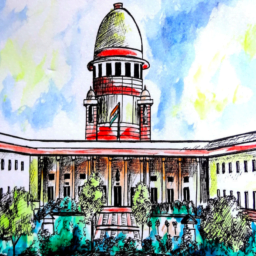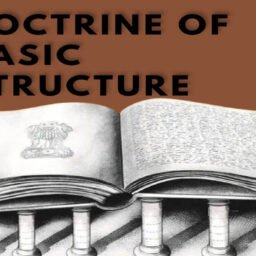INTRODUCTION
India is a diverse and multilingual country. The language represents culture. Every country has its’ own language through which day to day affairs goes between the people in that country. India being a multilingual country is an abode of more than 270 mother tongues spreads over a vast geographic space. It is an amalgamated entity, a bundle of mother tongue. With over 1.3 billion people and more than one thousand languages, it is home to many Indo- Aryan and Dravidian languages. The relationship between language and culture is significant for language learners, users, and all those involved in language education because it illuminates the range of perspectives on language usage
LANGUAGE RIGHTS IN INDIA
Linguistic human rights are increasingly more widely recognised as part of human rights (Language rights + Human rights= Linguistic human rights). The term language right is treated synonymously with linguistic human rights and linguistic rights. It is considered an individual right by some scholars consider these as individual rights and some others consider them collective rights Since independence, India has managed multilingualism more effectively through policies and regulations governing language usage in administration, judiciary, education, and other sectors, serving as an example for other countries to follow.
India’s Constitution is the lengthiest written Constitution which initially had 395 articles in 22 parts and 8 schedules, since then several articles have been included. There are 12 schedules in the Constitution of India, initially, there were 8 schedules but later four more were added by different amendments. One of those is the 8th schedule, it lists the official languages of the Republic of India. There is a total of 22 languages recognised by the government of India under this schedule. The 22 languages in the Eighth Schedule are Bengali, Bodo, Assamese, Gujarati, Dogri, Hindi, Kannada, Kashmiri, Konkani, Maithili, Malayalam, Manipuri, Marathi, Nepali, Odia, Punjabi, Sanskrit, Santhali, Sindhi, Telugu, Tamil and Urdu.
In a multilingual country like India, many languages face the real threat of disappearing shortly. There are various incentives extended to the listed languages to promote and preserve the languages –Article 29 talks about the Protection of interests of minorities. Linguistic human rights are a set of obligations on state authorities to use specific languages in a variety of contexts, not to interfere with individuals’ or private parties’ linguistic choices and expressions, and to support or recognise the use of languages spoken by minorities or indigenous peoples.
CULTURAL RIGHTS IN INDIA
Every group has its own culture, and no one can exist without it. Because we and other people attach similar meanings to the same objects, culture aids us in managing our daily lives. India’s culture is as diverse as its vast territory. People speak in a variety of languages, practise a variety of religions, dress differently, and eat a variety of foods, but they are all of the same nature. When India gained independence from the British in 1947, In the Assembly, there was a lot of discussions over which rights should be made justiciable i.e., enforceable by courts. Some Assembly members advocated for making social and economic fairness provisions enforceable rights.
K.M. Munshi created the “Rights of Workers” and “Social Rights,” which contained the right to a decent wage as well as women’s and children’s safeguards. Cultural rights, on the other hand, do not easily fall into any of the categories. Cultural rights, unlike other economic and social rights, such as the right to food, are guaranteed at the international level by the International Covenant on Civil and Political Rights (ICCPR) as well as the International Covenant on Economic, Social, and Cultural Rights (ICESCR). This is because some aspects of culture are considered civil rights, such as protecting minority cultural practises, while others, such as promoting greater access to a community’s cultural life and scientific advancement, are considered positive state obligations and thus grouped with economic and social rights.
The Indian Constitution’s framers adopted a similar approach. As a result, cultural rights are found in both Parts III and IV of the Indian Constitution. As basic rights, Part III covers the following clauses.
- Article 29(1) of the Indian Constitution guarantees ‘any section of citizens’ with a distinct language, script or culture the right to conserve it. This article, therefore, guarantees minorities the right to protect and preserve their culture.
- Article 29(2) protects the equality of citizens, as it guarantees protection against discrimination based on religion, race, caste or language.
- Article 30 allows permits cultural and linguistic minorities to establish and administer their educational institutions. This right, therefore, protects the right of minority groups to promote their cultures and languages.
- Article 30(2) prohibits the government from denying minority educational institutions state funds or aid. In other words, it prohibits discrimination and ensures equal protection of groups in the field of education.
The Constitution’s Part IV (Directive Principles of State Policy) also contains provisions concerning cultural life. Article 43 imposes a positive obligation on the state to ensure that all workers can fully enjoy social and cultural opportunities. This is related to the Universal Declaration of Human Rights (UDHR), which recognises the right to participate in and enjoy cultural life. Citizens of India are obligated by Article 51A(f) to appreciate and maintain the nation’s composite culture and history. As a result, the DPSPs assign responsibility for preserving and promoting India’s cultural heritage to both people and the government.
So, whether it’s a sad event or a happy one, people engage wholeheartedly, feeling the joy or the agony. A family or a house is never the focus of a festival or a celebration. When it comes to giving vigour to an event, the entire community is engaged. India is a country of rich and diverse culture and Indians have demonstrated strong unity irrespective of the diversity among them.
RELATIONSHIP OF LANGUAGE AND CULTURE
Language plays an imperative role in establishing and maintaining what we call culture, it is often used to identify or separate people into groups e.g., western culture, eastern culture, and African culture it also includes conventions, interpretive practices, and habits of individuals and communities. Each culture categorizes its activities and surroundings, such as private and public, learning or teaching environments, burial sites, informal and formal, and so forth. Culture is the state of human development, customs and manners of a given people at a given time in their history. India has a total of 22 official languages, with 270 mother tongues spoken throughout the country, according to the census. India’s diversity of languages, religions, and traditions throughout its regions distinguishes it from other countries.
Only around 121 languages, however, have a significant speaking population. At least two to five languages are taught to citizens to write, read, and speak. From the psychological perspective language and culture are inseparable, since an individual carries all the cultural and linguistic experience within oneself. The behavioural patterns that a person learns as a result of growing up in a certain culture have an impact on a person’s life. Body language varies widely throughout the world, and some variances may impact people’s intercultural interactions.
CONCLUSION
Language and culture have a strong homologous link since they formed and emerged together long before humans were able to write or understand themselves. People’s lives have been influenced by the development of culture and language. States should respect and take constructive measures to promote, develop, and retain vital components of identity such as minority languages and tribal languages, rather than favouring one official language or a few international languages. Respectfully and actively accommodating linguistic diversity is also the symbol of an inclusive society, and one of the keys to countering racism and intolerance. Accepting language rights is a clear step promoting intercultural and tolerance dialogue, as well as building stronger institutions for continuing respect for diversity.
The beauty of the Indian people resides in their spirit of tolerance, give-and-take, and a fusion of cultures that may be compared to a garden of flowers of all colours and hues, each of which, while keeping its own identity, contributes to the garden’s harmony and beauty.
Author(s) Name: Nikkita Acharya
















